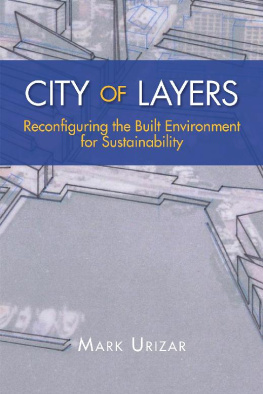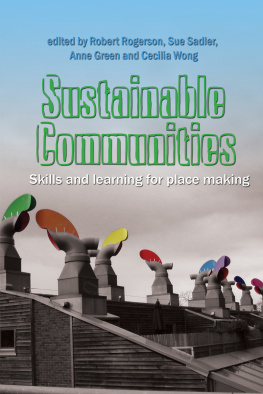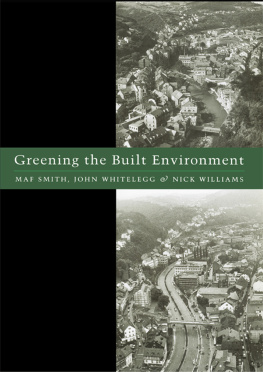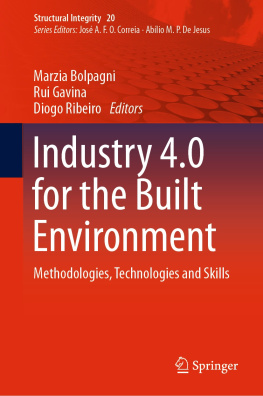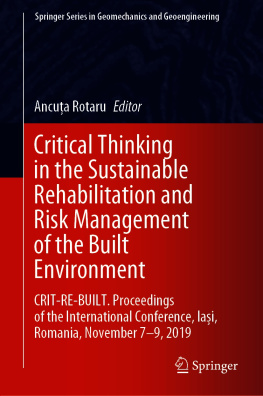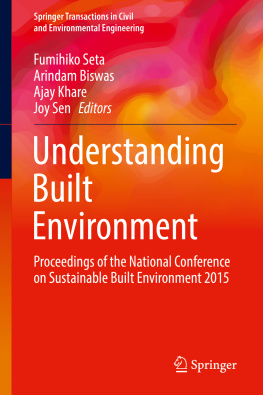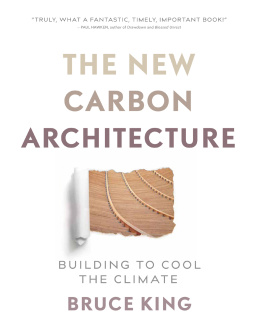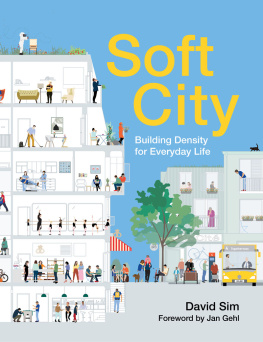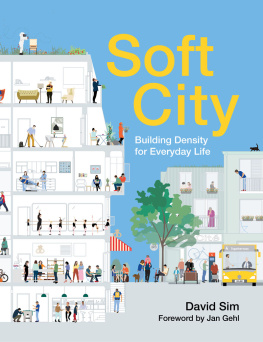CITY OF LAYERS
Reconfiguring the Built
Environment for Sustainability
MARK URIZAR
FAIA, PMP, CPPM, MBA, MAppSc
LEED-AP, GSAP
Copyright 2012 by Mark Urizar.
Book Cover: Image of Hobart Waterfront Urban Development Proposal,
Urizar & Partner Architects (UPA), 2006, www.aaax.com.au
Library of Congress Control Number: | 2012905770 |
ISBN: | Hardcover | 978-1-4691-9197-3 |
Softcover | 978-1-4691-9196-6 |
eBook | 978-1-4691-9198-0 |
All rights reserved. No part of this book may be reproduced or transmitted in any form or by any means, electronic or mechanical, including photocopying, recording, or by any information storage and retrieval system, without permission in writing from the copyright owner.
Rev. date: 03/13/2020
Xlibris
1-800-455-039
www.Xlibris.com.au
513017
CONTENTS
This book was written with the belief that once we better understand our possible futures and options within the built environment, we would chose to participate and contribute by doing responsible and appropriate things; the right things and doing these things right. With these, we have the potential to resolve the many present social and environmental problems, and help transform the built environment into a self-reliant and possibly, a sustainable entity, in our life time.
There is no other comparable expression to architecture. In its simplest form, architecture provides physical shelter, and in its most complex form, it can inspire and affect us both emotionally and spiritually. Architecture has been a vital component of our development, as it rightly, or wrongly defined so much of our lives and environment. As much as we have influenced what is created, the architecture has, in turn, influenced us, both in our behaviours and well-being. With such a capability, architecture has the potential to truly enhance our lives and help resolve many of todays emerging social and environmental conc erns.
We shape our dwellings and afterwards our dwellings shape our lives.
Throughout human history, both the shelter and art aspects of architecture fulfilled a very real individual and social need. From the very basic and ancient shelter structures to todays highly engineered solutions, architecture expresses what we feel and think. As it defines our spaces, it adds to our culture in ways that benefits us, as individuals and as a soc iety.
Architecture evolved with art and a sense of the possible. The earliest known architecture had a very pure and natural form that reflected the way things were. This representational or realism style culminated with the early Greek architecture. And as society became more sophisticated, this style morphed into the romanticism or idealism style, as evident with Gothic architecture. And as time passed, architecture evolved further. It began to lose its reference to nature until it became the abstract style, the modern built form we have today. As the ancient architecture reflects who we were, the newer-built forms represents who we are now, what we value, and aspir e to.
As the built form evolved and formed communities and societies, so evolved the architecture-from buildings to todays complex urban form. And this is where the majority of us now live. We have confined virtually everything we do within built spaces, which have come to reflect how we choose to live and what we like to do. And without much imposed restriction and limited choices, the architecture we produce has endless possibili ties.
We use an infinite number material, elements, components, systems, and combinations that vary from stone to steel to glass, from transparency to lightness, from void to solid, and from the inspirational to the disturbed. However, with limitless choices, we have inadvertently disregarded the associated consequences and the long-term liabilities of our decisions and actions. As a result, the built environment has become an endless string of narrowly defined and, often, not-so-well thought-out solutions, configured to function with open-loop processes, where large quantities of energy and resources are consumed at one end, and at the other end, equal amounts of waste are produced. This is our built environment. It is now the largest energy-consuming human entity and a major contributor to ongoing climate change and ecological da mage.
With our choices, we have created many seemingly irresolvable dilemmas between humanity and nature, society and ecology, and utility and beauty. These dilemmas have arisen from how we composed and configured the built environment and also, our lives-with each decision made and action taken causing some harm. And these dilemmas cannot simply be resolved with some new guideline or design, or by doing things less bad by reducing, avoiding, minimising, or limiting harm. Resolving these requires a different approach, one that is holistic in nature and is focused at creating socially responsible outc omes.
This is the basis for the city of layers concepts and this book. A city is after all, a composition of many different parts and layers. Each can be better designed and configured, so the resulting composition becomes a viable and synergistic whole that can sustain its inhabitants without causing environmental harm.
After a millennia of seeking protection from the environment, the environment must now be protected fro m us..
T oday, our impact on the environment is larger than before. There are simply more of us. We all seem to be preoccupied on some personal quest to improve our well-being and achieve self-fulfilment, despite the costs and consequences. This may well be a trait inherited from our distant past, when we were still competing with others for our survival. Then, it was essential that our kin lived longer and had more offspring. Today, the legacy of this trait remains whilst we no longer need to compete for our surv ival.
In business, competitive traits dominate behaviour. There, our appetite to fulfil our personal need is both insatiable and infinite. We constantly pursue new opportunities to produce and consume more. The more we produce, the more we sell, the more profit we make, the more we consume. To improve efficiencies, we apply technological advances to source more resources, at faster rates, from distant places and in greater volumes. And as we do, we pay little regard to whether these resources are finite or whether such practices are sustain able.
To increase our wealth and improve our well-being, we have privatised many of the worlds natural resources and carved up and sold nearly all the available lands to private interests. Along the way, many of us, as farmers and land-owners are caught within this competitive system. We are forced to compete against nature just to pay our debts, retain our lands and earn a living. On this path, we pay more attention to our legal rights and business transactions than we do on any associated environmental issue or con cern.
With the present notions of land ownership, private land use rights, and common resources usage, our ability to perceive, act or resolve any emerging environmental concern is hampered. All our well intentioned measures to deal with emerging concerns are diluted to a piecemeal approach with solutions having to contend with vested interests and legal complexities. We have limited our choices to preventing, mitigating, protecting and restricting certain actions rather than doing things right and the right things. Consequently, our actions are simply not stopping the ongoing ecological damage that is occurring.
In the past, in the pre-modern age, our ancestors lived with nature. They understood it. To survive, communities collectively monitored and interpreted natural cycles so they could produce perpetual crops. In contrast, today, we live in a larger, denser and artificial urban-built form environment, one that has virtually separated us from nature and our community. We no longer see or experience nature and nor do we understand the emerging consequences we are crea ting.
Next page
